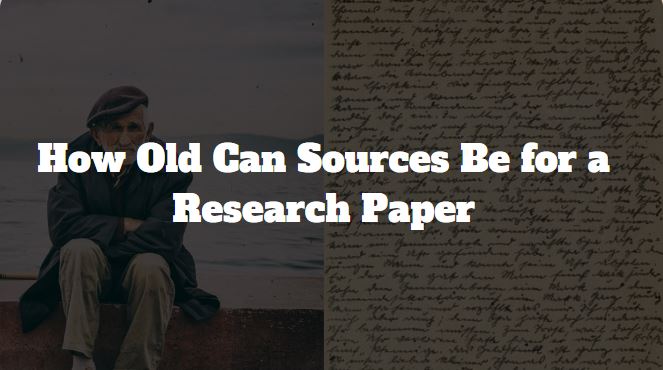Whether doing research for a paper or simply looking for information about a topic, it’s vital to ensure that it is accurate and up-to-date.
This is important because information keeps on changing, especially with technological advancements. Furthermore, what can be factual today can easily be obsolete tomorrow.
Thus looking at your source’s age is crucial if you want your research paper to be up to date. So, how old can sources be for a research paper? This post answers this question to help guide your decision on whether an older source is still helpful in your research paper writing.
How Old Can Sources Be for a Research Paper
Generally, sources for your research paper should be as recent as possible. But to be more specific, your sources for a research paper should be less than ten years old if you are in the literature, humanities, history, and art disciplines.
On the other hand, if your research paper is in a fast-paced field such as medicine, finance, business, or technology, aim for between two and three years.
This is ideal because these fields change rapidly, and you need to present information that time has not bypassed.
If unsure of your field, aim to have at least 85% of your sources be less than five years old. Nevertheless, even for slow-changing areas, the age of your sources will also depend on the topic being tackled.
Also see: Do college professors actually check sources?
For example, if writing about literature in recent times, you will use reasonably current sources to avoid giving information that is not helpful or relevant for the said time.
However, older sources are still acceptable if they have something significant to say about your topic. Nevertheless, some key factors will determine how valuable such a source will be for your research paper. These include the author, trends then and now, and if there are statistics involved.
Can I Use Old Sources for a Research Paper
You can use old sources, provided they provide more understanding of the topic and do not contradict your argument. Generally, the age of your citations depends on your field, topic, and sometimes your professor’s instructions.
In fact, there’s no reason not to use old sources if they are good and do not provide obsolete information. In most cases, older sources will be valuable for providing background information, not current topic trends.
A topic will also influence if you can use old sources. For example, if writing about ancient Rome or Egypt, there may not be many recent resources available that could help shed light on the subject.
However, if you’re writing about modern-day China or Japan, there’s likely plenty of recent books and articles. Thus it will be prudent to use recent publications for your citations.
Some other reasons that may necessitate you to use an old source include
- You need information on a topic that isn’t covered by current books or journals
- You want an alternative perspective on a topic. For example, when there’s only one viewpoint presented in modern-day textbooks)
- You want to find out what scholars thought about a particular subject in the past – especially if there aren’t any current scholars researching it
What Is Considered Outdated Research
Researchers and scholars consider pieces more than two to five years old outdated. However, they may also consider writing pieces of ten years and beyond outdated. Generally, it depends on the field and topic in question.
Outdated research is a study that has been superseded by new research, and it can happen for a variety of reasons, including;
- Release of new information. The more knowledgeable one becomes about a topic, the less relevant older information becomes.
- New methods can make old ones obsolete quickly and easily. For example, if a better way of doing something is discovered, the older one will fade with time and become abandoned altogether.
- The sample size was too small or biased
Furthermore, fields such as technology, medicine, and finance change rapidly. It is recommended not to use sources more than three years old if writing about them, even though sometimes this may go up to five years. Conversely, fields such as literature o art allow sources not older than ten years. Others beyond this it is considered outdated research.
How Old Should Scientific Sources Be
Scientific sources should not be more than three years old. However, you can use up to five years old sources but with a lot of caution. The scientific field is rapidly changing, and information used many years ago can be inapplicable today.
Still, if you use a current source in your research paper, double-check its accuracy and relevance to ensure it’s the best choice for your topic. This is because academic and industry experts may not have yet reviewed some developments to warrant the information being cited as accurate and reliable.
The best way is to use scientific journals because experts usually review them to ensure they are up-to-date and accurate. This means you can trust them as a source for your research paper.
Generally, a scientific source’s age is essential when evaluating its credibility. In most cases, the older the source, the more reliable it is likely to be, even though a few aspects may need counter-checking because of new developments. Additionally, modern science is constantly evolving and improving itself.
Scientists find new ways to do things more efficiently every year and develop new theories that explain phenomena better.
